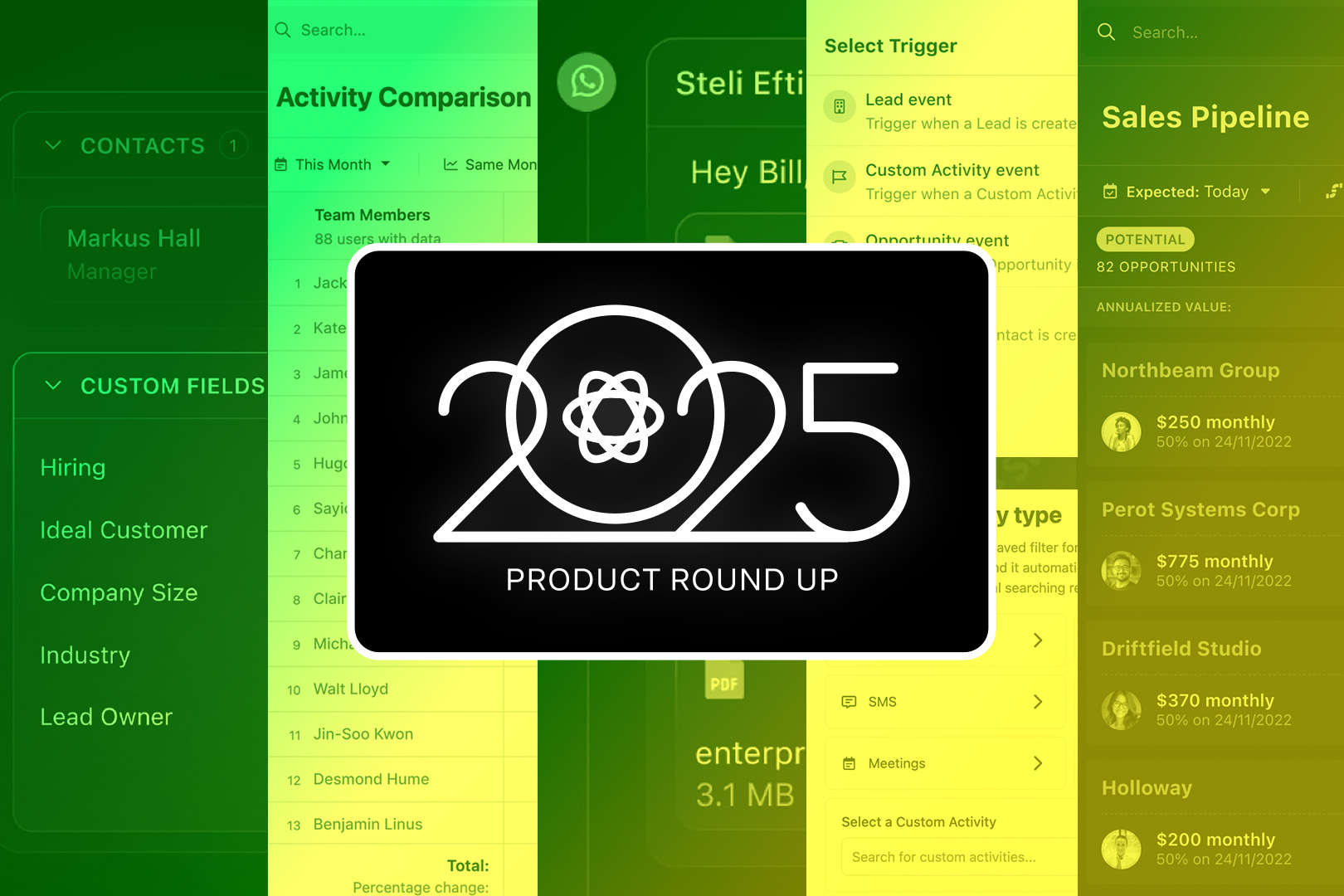In the wide world of sales, is anything worse than a no-show? You’ve qualified the lead, booked the time, scheduled your whole day around the meeting, and then…
…poof. Ghosted.
It doesn’t matter if it’s dating or business: getting ghosted is never fun. But no-shows are more common than you might think. They’re especially common in consumer sales, coaching services, and SMB deals where your leads live busy lives.
No-shows aren’t always intentional; they just sort of…happen. True: you’ll need a strategy for preventing them from happening in the first place. But you also need a strategy for following up if they do.
We’ll look at no-shows from both angles. Here’s how to reduce no-shows and recover from them when they’re happening, using Close CRM:
Step 1: Expect No-Shows—and Build Around Them
First, accept no-shows as a fact of life. Not every schedule is optimized, and you can’t prevent everyone from changing their mind. Even in a perfect system, a no-show will happen. Breathe. Relax. Everything is going to be just fine.
However, that doesn’t mean you have to accept high no-show rates. You just need to know how to mitigate them.
Your first step is to add automation to your calendar (such as having Close send out automatic email/SMS reminders) to reduce no-shows before they happen.
This is a hands-off way to cut back on no-shows, a solution that requires no additional work from your sales reps.
But don’t stop there. You’ll want to use Close to build a follow-up system to recapture missed meetings with a unique workflow. Don’t be afraid to send out emails asking: Hey, what happened there?
Although a no-show can feel like an insult, remember that’s not always your lead’s intention. These weren’t cold leads, after all. They were leads who filled out your form, scheduled a time to chat, and were, at one point or another, genuinely interested in what you had to sell.
And that’s a fact you don’t want to go to waste.
Step 2: Set Up a Clear Status System
If you’re feeling a little sore from all the no-shows, don’t worry: Close won’t leave you hanging, either.
Some tools can help you better manage your no-shows immediately. We recommend that you define your meeting statuses as clearly as possible.
(Note: meeting status refers to where your lead is in your current pipeline. Have they booked a meeting only? Completed a meeting? Are they an official no-show? You can work these settings within Close so you never have to ask.)
Using Close, define your meeting statuses clearly. We recommend labels like this:
- Discovery Set: meeting booked
- Discovery Had: meeting completed
- No-Show: meeting missed
When a call is missed, your reps should be able to change the opportunity status to No-Show immediately.
Why bother? Because now you have a data point. You can filter those leads in different workflows, or program Close to create a new workflow for follow-ups.
Step 3: Trigger an Automated Rebooking Workflow
A no-show may feel like a dead end. But that’s not always the case. There’s still an opportunity here. When a no-show happens, reps shouldn’t simply wash their hands of it and move on.
Now that you have the new No-Show status in Close, you can create a workflow. Or you can even send a quick manual email or SMS within the software, saying:
- Hey, looks like we missed each other. Want to reschedule?
You can also automate a few follow-up emails and SMS messages for the next few days. Keep them simple, friendly, and focused on the rebooking.
You never know. Sometimes, people simply forget all about that meeting and are happy to click “reschedule.”
Why? This gives your lead some more time to respond on a personal level before the automation takes over. It feels a tad more human. And when they think of you as a human on the other side of the screen, they will probably regret the no-show.
(Not that we’re guilt-tripping them or anything.)
Step 4: Use a Smart View to Track and Call No-Shows
We recommend creating a Smart View in Close just for the no-shows, especially if you want to be more proactive with responding to them.
When using Smart View, you’ll add filters to define a no-show and give yourself a mini-dashboard of all the no-shows you’re struggling with. Consider adding filters like:
- Opportunity status: No-show
- No upcoming meeting scheduled
- No incomplete tasks
- No call in the last 24 hours

That will give you a list of leads who’ve turned into no-shows. Now you’re proactive. You’re not ignoring no-shows; you’re taking on the whole no-show problem head-on. Your sales reps can then work their way down this list every day.
What happens when no-shows morph back into leads? If they rebook a meeting, change their status back to Discovery Set. You’re back in business.
Step 5: Assign No-Show Follow-Up to the Right Team
Have both appointment-setters and sales reps on your team? Now’s the time to split the work.
Your rep who experienced the no-show can simply mark the status and move on. The appointment-setter can step in, using your new Smart View, and focus entirely on the skill of getting that meeting back on track. This way, you can keep your sales reps focused on prepping for more active deals.
A little pro tip: we recommend numbering Smart Views (like “1—Daily Leads” or “3—No Shows”) so your reps know which lists to work on first.
Don’t Let Your No-Shows Turn Into Dead Ends
A missed meeting isn’t officially a failure until you give up on the lead. Sometimes? Sure, you might have to. But other times, a no-show is just a little detour on the way to a sale.
Close makes it easy to manage these by tracking your no-shows, automating the rebooking process, and keeping your reps focused on the conversations that are most likely to convert.
Close CRM isn’t designed to help you prevent getting ghosted in your dating life—that’s another article entirely. But for your sales leads, it can help you manage no-shows like a pro. Wanna see how it works? Start your free 14-day trial of Close and see if our platform is right for you.












